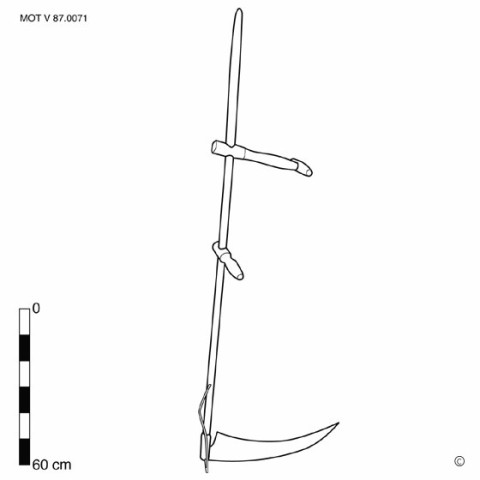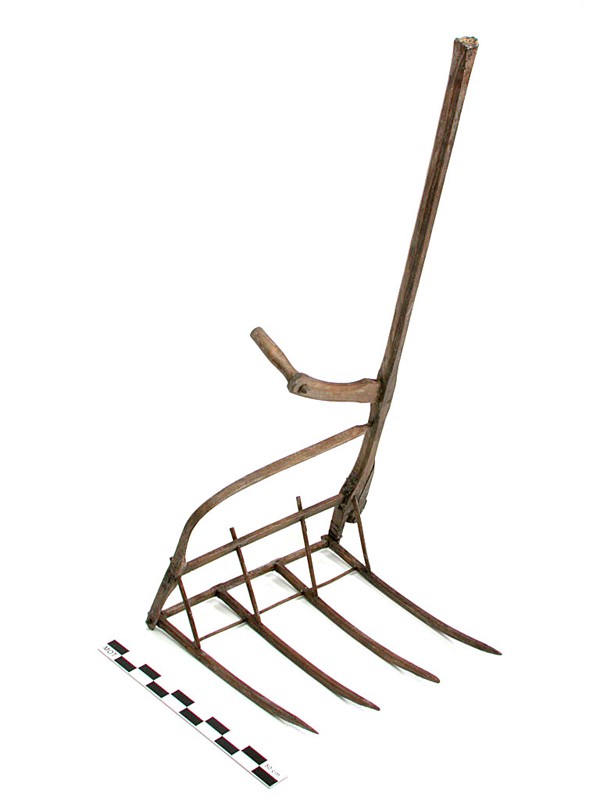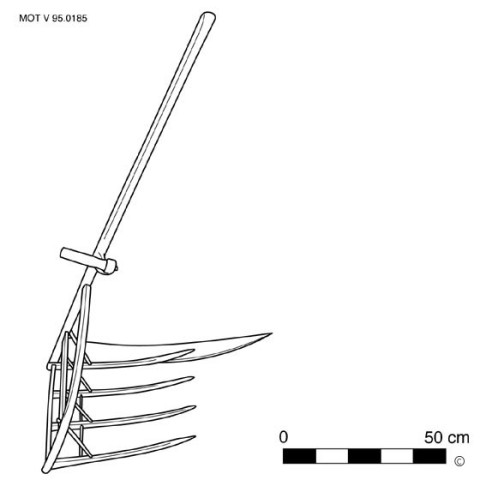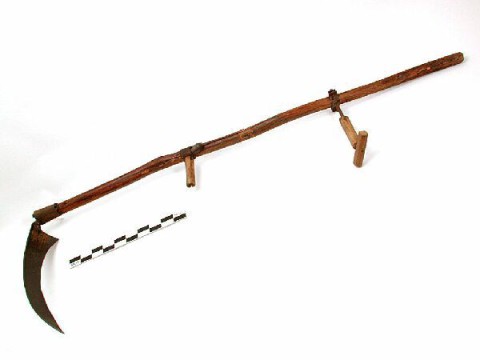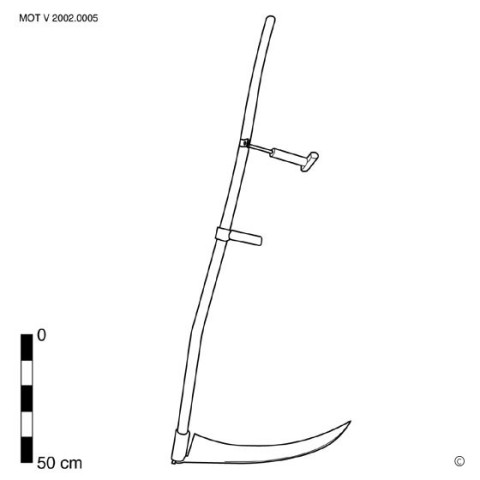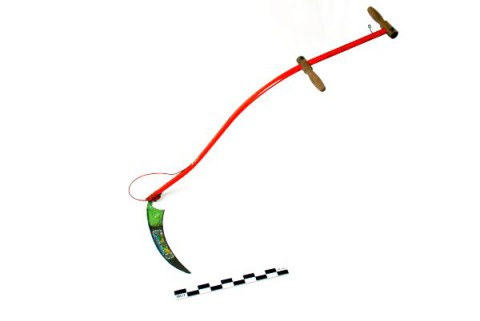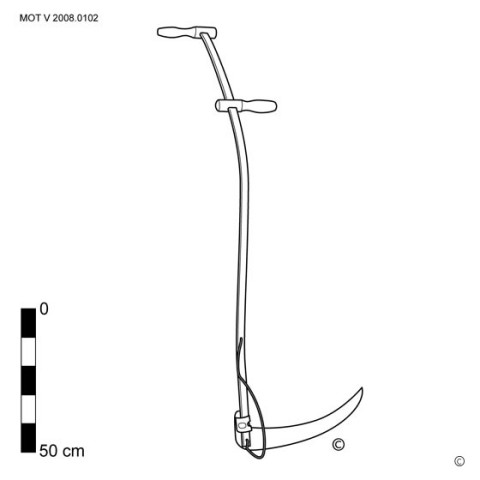Scythe
A scythe is used to cut grass for hay, to harvest grain and to remove weeds.
A scythe has a long (approx. 40-100 cm) slightly curved blade with a wide back, ending in a point, which is attached at right angles to a long (approx. 150-200 cm) wooden or iron handle. The connection is done by means of a ring and a wedge or a screw, so that the angle between blade and stem can be changed and the blade is easily removed for whetting (see whetting hammer). The stem can be straight, S-shaped (1) or Y-shaped (2), without handles or with one or two handles, which are adjustable. Sometimes a whetting wood is attached to the straight handle.
For haymaking, a scythe is used on which a wooden or iron bracket is attached at the bottom, which drags the cut grass along. That scythe also serves to mow weeds. When working between shrubs, etc., a scythe with a short blade (approx. 40 cm) and without a bracket is preferred.
A scythe with one or two wooden brackets is used to harvest the grain. Long culms are cut inwards, i.e. the standing culms are to the left of the mower (3) and the cut culms fall against them. Oats or barley, with short culms, are cut outward. There is also a scythe with a comb for the grain; the teeth ensure that the culms all fall in the same direction when they are cut. The scythe is used to mow outwards.
The scythe is handled with both hands. By making a swinging motion from the hip, the grass or grain is cut. The tool thus cuts through friction, unlike the Flemish scythe.
See also the grass hook and peat scythe. [MOT]
(1) Eg. SLOANE: 103.
(2) Eg. JEWELL: 110.
(3) Left-handed scythes are exceptional.
